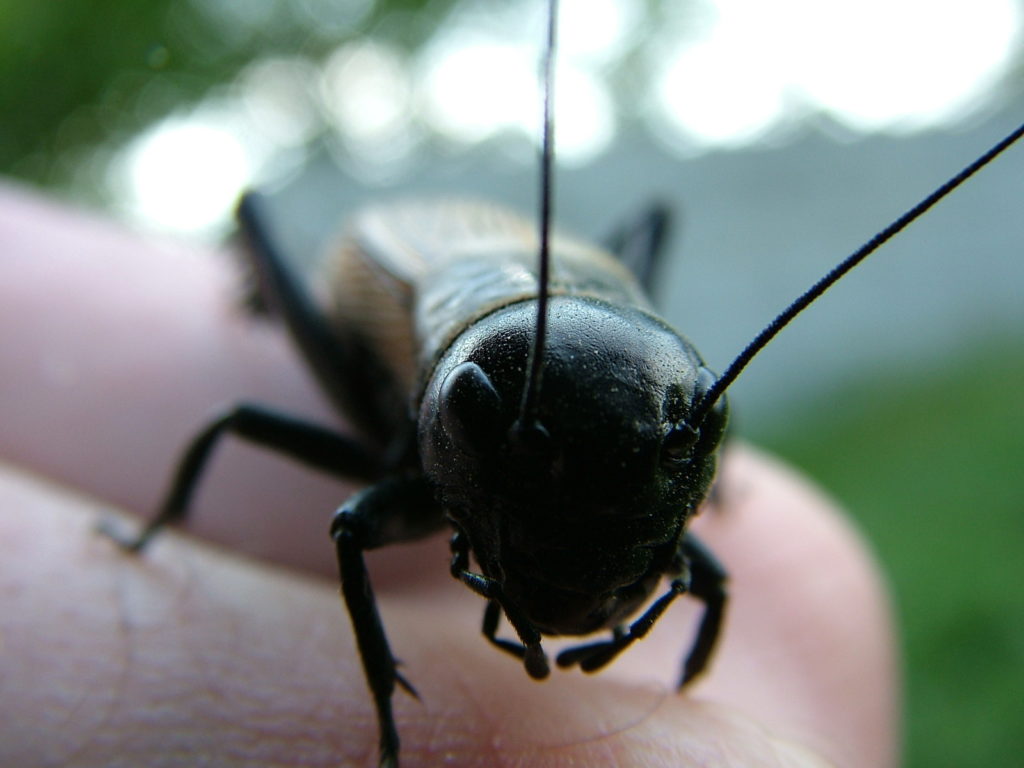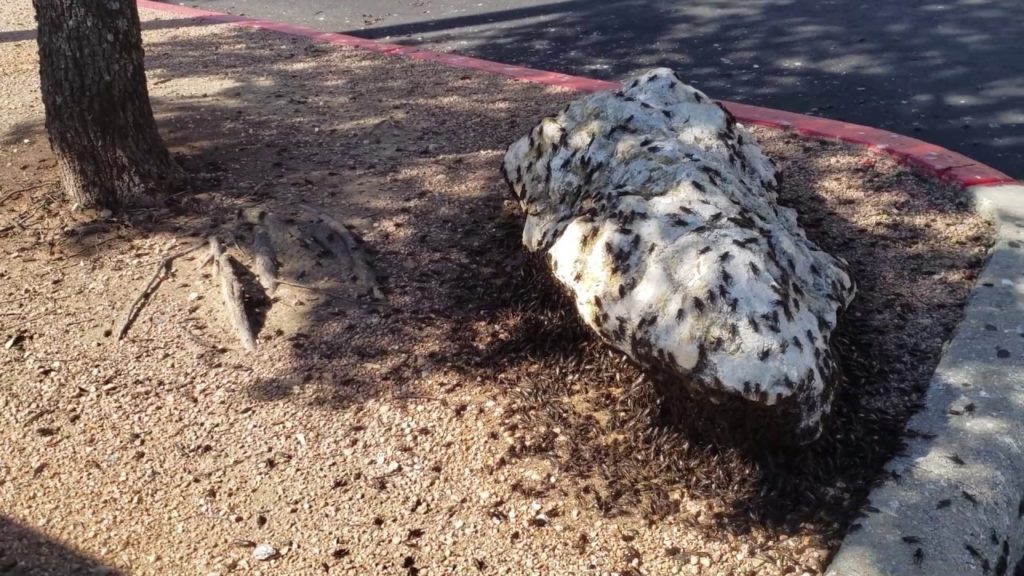When someone says “cricket” what’s the first thing that comes to mind? If you’re a sports aficionado, you may think of the most recent match results or of the iconic cricket bat. If you’re a Disney fan, you probably imagine a little Jiminy Cricket singing and dancing, complete with top hat, umbrella, and gold badge. If you’re a techie, your first thought may be the U.S. wireless company that’s been around for over 20 years. However, if you’re a Texan, there’s a good chance the first thing you’ll think of is a time when you were surrounded by hundreds of crickets.
Though the little black crickets can be seen throughout the year in Texas, the late summer and early fall often bring a drastic influx of cricket activity. These hopping insects can be seen bombarding homes and businesses in numbers reminiscent of a biblical plague. So why does this happen and what can be done about it?

What do Crickets Look Like?
There are more than 900 species of crickets, but when we talk about crickets in Texas, we are almost always referring to field crickets. These insects are dark brown to black, range from a 1/2 inch to over 1 inch long, have oblong bodies with wings that lie flat along their back, rounded heads, long antennae, and powerful hind legs. But perhaps the most notable feature of crickets isn’t how they look, but how they sound. Known for their distinctive chirp, these insects are an ever-present sound of summer evenings outdoors. Fun fact: only adult male field crickets can chirp, and do so both to mark territory and to attract females; the familiar sound is created when they rub their wings together.
What’s the Difference Between Crickets and Grasshoppers?
Crickets, grasshoppers, and locusts are all relatives and are part of the order Orthoptera. Sharing a similar body shape and ability to produce sound by rubbing together parts of their body, they do differ in color, behavior, and diet. Crickets are nocturnal and are omnivores, happily eating both plant and animal matter, and even eating scavenged and decaying plants or animals. Grasshoppers, on the other hand, are active during the day and are herbivores. Locusts, on an individual level, are pretty similar to grasshoppers, but when they congregate in large numbers they cause exceptionally damaging, and notorious, plagues. If you thought the cricket swarms were bad, they are nothing compared to a swarm of locusts.
Where are Crickets Found?
Predominantly found outdoors, crickets prefer to live in areas that are cool, dark, and damp. This generally means they can be found around plumbing, under rocks, and in dense foliage or leaf litter. However, they do sometimes make their way indoors, usually in the pursuit of food or shelter. Fortunately, once indoors, crickets won’t set up a colony or reproduce inside your home. If you do see a large number of crickets inside, it’s a sure sign that there are gaps or other entryways that are making it easy for these pests to invade your home.
Are Crickets Dangerous?
Though they are far from making anyone’s top ten list of dangerous insects (they don’t even sting or bite), crickets aren’t simply a nuisance pest either. A single cricket can’t do much damage, but in large numbers, like the swarms seen pretty much every August/September in Texas, they can pose a risk to people, plants, and possessions. When they go in search of food, they will often be found eating plants (like those in a home garden) or even some fabrics, including clothes and rugs, causing definite damage to whatever they are feeding on. But the damage to fabrics isn’t only from being eaten; even if they don’t nibble on your fabrics, they can still cause damage through stains created by their feces or feeding activities. Still, stains aren’t the biggest concern when it comes to cricket droppings; when these insects show up in large numbers, both their excrement and their corpses can prove to be a sanitation issue. Compounding the issue is the fact that any time you have that many insects in one place you are always at a higher risk of attracting predators (like raccoons) to your home or business, which can cause a a whole host of other problems.

Why do Crickets Swarm in Texas?
The annual late summer/early fall cricket swarm in Texas arrives as large numbers of nymphs reach their adult stage simultaneously. Field crickets lay their eggs in the fall; these eggs remain in the soil they were laid in until the following spring when they hatch. Approximately 3 months later (around August/September) they reach adulthood, and at that point are capable of flight and go off in search of mates, this is when we see the notorious swarms. So why are crickets so much more prolific some years and not as bad others? Though the exact reason why this happens isn’t fully known, there is a strong correlation between a dry spring & summer, and an abundant cricket season.

How do you Prevent Crickets?
The number one thing you can do to prevent crickets from congregating around your home or business is to reduce the use of outdoor lighting. Crickets are attracted to brightly lit areas and will swarm to them during the night when they are most active. If possible, turn off or drastically reduce the hours that outdoor lights are used after dark. In cases where that would prove to be a safety hazard or otherwise is just not possible, consider switching to yellow incandescent lights or low-pressure sodium vapor lamps as they are significantly less attractive to crickets.
In addition, removing harborage areas from your property and sealing up any obvious insect entry points will go a long way toward preventing a major cricket infestation. A few common areas to address are:
- Firewood: make sure this is kept off the ground and away from the home
- Leaf litter/yard debris: remove this regularly
- Door thresholds: make sure that the seals and sweeps are in place and in good condition
How do you Eliminate Crickets?
If a cricket swarm has established itself on your property it can feel like you’re living in a Hitchcock film. The quickest and most effective way to eliminate these pests and take back control of your home is to call The Bug Dude at 817-354-5350 and let our experienced technicians treat the swarm.
Further Reading:
“Cricket control in the fall” – Michael Merchant – Texas A&M AgriLife Extension
“Field Cricket” – Field Guide to Common Texas Insects – Texas A&M AgriLife Extension
“Grasshoppers, crickets, katydids and locusts: Order Orthoptera” – David Britton – Australian Museum
Author Bio: Alissa Breach has been gaining knowledge and experience around pest control concerns over the last 11 years while working for Mid-Cities Pest Control. She has a creative writing BA from UW-Madison and is always pursuing new and interesting writing projects.
Image Credits:
Cricket Photo by IMRE Daniel




